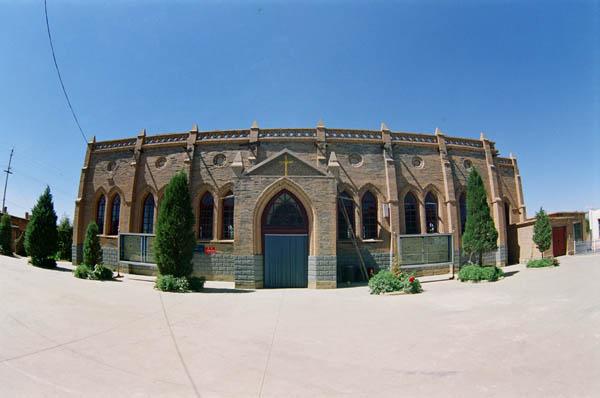Surviving from the Japanese bombs during the Sino-Japanese War II, the largest, century-old cathedral in Inner Mongolia - Sanshenggong Cathedral - reopens after renovations.
Located in a county of Bayannur, a prefecture-level city in the western area of the province, it is the largest cathedral in the northwest China, once serving as the central church for the Northwestern Mongolia Diocese, Ningxia Diocese and Bayannur Diocese, according to China Economic Net. In 2006, it was listed as one of the provincial cultural relics protection units.
The cathedral was completed in 1893 after a three-year construction. In the past century, almost all the residents in Sanshenggong area were Christians when the holy temple reached to its highest number. Later, it was in decline and was ruined by the Japanese bombs during the Second Sino-Japanese War and damaged during the Cultural Revolution to the extent that it was no longer safe for gatherings.
Considering its historical, cultural and architectural aesthetic values, the local authority renovated and strengthened the church's structure.
In 2015, the church started land acquisition to expand its operations and build offices, repair the main sanctuary and for the fitout for the reopening.
The Gothic cathedral also represents the features of the Chinese local nationality, as quoted in the official website of Dengkou County.
The cathedral covers 675 square meters with a doomed-shaped roof supported by two lines of red pillars.
It has five altars in different sizes and a bell tower at the height of ten meters, along with an affiliated monastery, convent, nursery, male primary school and orchard.








